A look back at Supreme Court visits to Notre Dame Law School
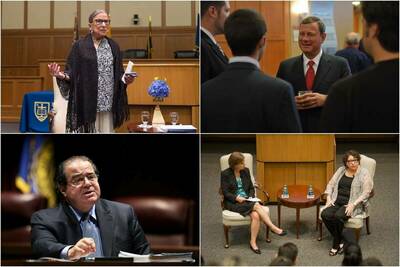
Three U.S. Supreme Court justices visited the University of Notre Dame campus during the first month of this fall semester.
Associate Justice Amy Coney Barrett, a Notre Dame Law School alumna and former faculty member, taught a one-week seminar on statutory interpretation to third-year law students at the beginning of the semester. Associate Justice Clarence Thomas delivered the 2021 Tocqueville Lecture, sponsored by Notre Dame’s Center for Citizenship and Constitutional Government, on September 16 at the DeBartolo Performing Arts Center. Finally, Associate Justice Samuel Alito spoke about the Supreme Court’s emergency docket on September 30 in the McCartan Courtroom in Eck Hall of Law.
The visits are part of a long tradition at Notre Dame, where members of the nation’s highest court have been welcomed to campus to share their knowledge and views on the law. Here is a look back at some other visits from Supreme Court justices over the past 20 years.
Ruth Bader Ginsburg
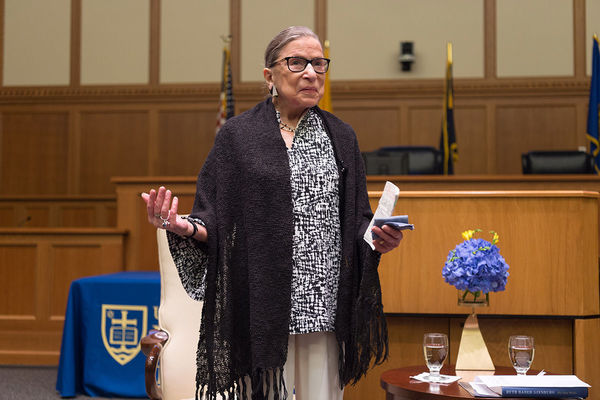
When Associate Justice Ruth Bader Ginsburg visited campus in 2016, more than 7,000 people packed into Purcell Pavilion for her conversation with Notre Dame Law alumna Ann Claire Williams ’75 J.D., then a judge on the U.S. Court of Appeals for the Seventh Circuit.
Justice Ginsburg also set aside time to meet students and speak at the Law School in the McCartan Courtroom, moderated by Professor Jennifer Mason McAward, a former clerk to retired Justice Sandra Day O’Connor.
Ginsburg encouraged law students “to help repair tears in society” through their work as lawyers.
“The law exists to serve,” she said. “The law exists to help a society stay together in harmony.”
Sonia Sotomayor
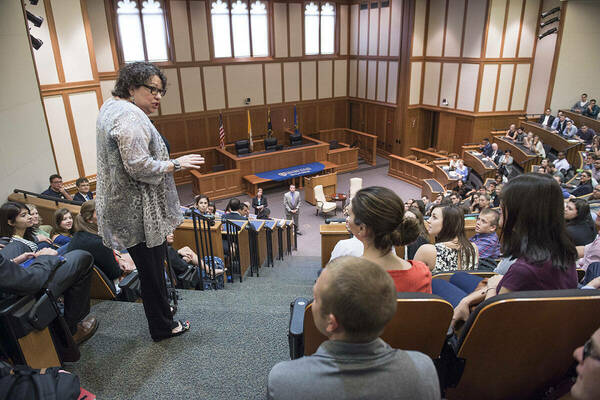
Associate Justice Sonia Sotomayor shared personal anecdotes as well as her viewpoints on the Supreme Court and the law during an appearance at Notre Dame in 2015.
“I have always tried to approach the law as a learning process, as one of trying to understand how other people have approached particular questions,” she told NBC News Correspondent Anne Thompson ’79 during their public conversation in the DeBartolo Performing Arts Center. “I believe that people really expect the law to have some fixed meaning that gives them some measure of comfort in their human relations.”
Sotomayor met with Notre Dame Law School students during that same visit. She spoke to law students and responded to their questions in the McCartan Courtroom.
Samuel Alito
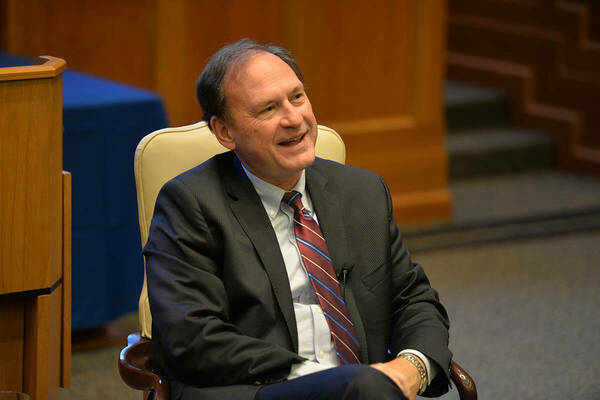
Associate Justice Samuel Alito visited Notre Dame Law School in 2014 and 2015.
In 2014, he served as the Judge James J. Clynes Jr. Visiting Chair. The day’s events included a conversation between Justice Alito and Notre Dame Law Professor William Kelly in the McCartan Courtroom. Kelley served as a law clerk early in his career for Chief Justice Warren Burger and Associate Justice Antonin Scalia.
Alito returned to Notre Dame in 2015 for a panel discussion on a book, “Italian Constitutional Justice in a Global Context,” co-authored by Paolo Carozza, a Notre Dame Law School professor and director of the Kellogg Institute for International Studies.
Clarence Thomas
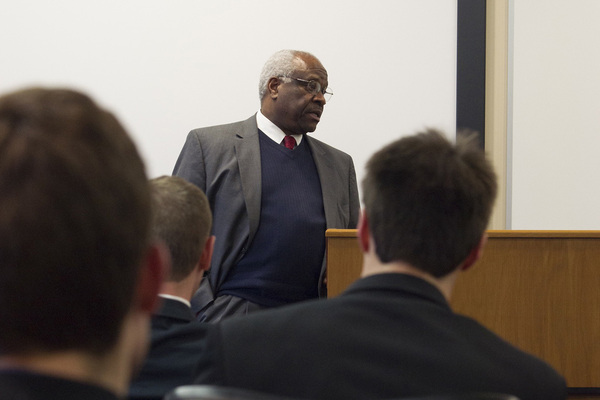
Associate Justice Clarence Thomas visited Notre Dame Law School in 2013 as the Judge James J. Clynes Jr. Visiting Chair.
Over the course of two days, he taught Law of Education and Federal Criminal Law courses. By popular demand, the Federal Criminal Law class session was opened to all Law School students. In addition, he spent time with the Law School’s student groups, including the Federalist Society and Black Law Students Association.
Justice Thomas and Notre Dame Law Professor Nicole Stelle Garnett, one of his former clerks, participated in a conversation in McCartan Courtroom that touched upon the justice’s childhood influences, his judicial philosophy, and his expectations of law clerks.
Thomas returned to the Law School in 2014 to teach an intensive seminar course, Religious Freedom and the Establishment Clause, with Professor Richard Garnett. Students enrolled in the course spent the week closely examining the Establishment Clause’s text and context, as well as Supreme Court decisions dealing with church-state matters and religious freedom.
Anthony Kennedy
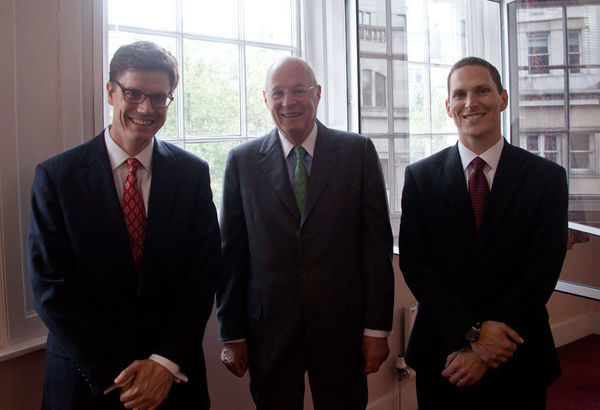
In 2012, Associate Justice Anthony Kennedy visited the University of Notre Dame’s London Global Gateway. He met with students and faculty of the Notre Dame London Law Program. The faculty included two of his former clerks: Professors Randy Kozel and Jeff Pojanowski.
Justice Kennedy discussed the role of the U.S. Constitution in shaping the American identity and the Constitution’s role in serving as a model throughout the world. He further noted the powerful influence of Britain’s constitutional tradition on the U.S. Constitution and its basic values.
John Roberts
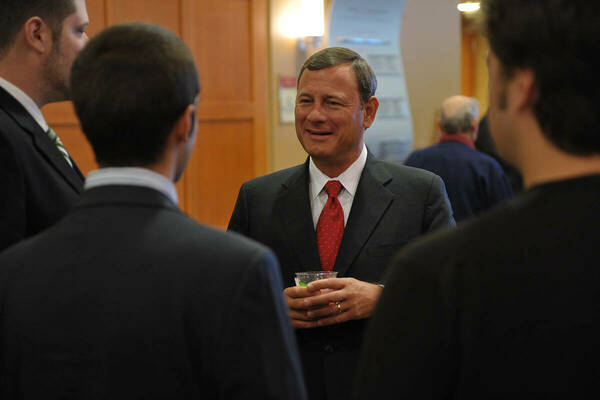
In 2008, Chief Justice John Roberts held a one-day appointment at Notre Dame Law School as the Judge James J. Clynes Jr. Visiting Chair.
The chief justice met and spoke students and faculty in a series of events throughout the day. One of those events was a conversation with Notre Dame Law Professor William Kelley onstage at the DeBartolo Performing Arts Center.
A few quotes from the conversation:
- “It’s easier to ask questions than to answer them,” Roberts joked when talking about the difference between arguing cases before the Supreme Court as a litigator and hearing cases on the other side of the bench as chief justice.
- In interviews with prospective clerks, Roberts has been known to ask candidates to tell him a joke after quizzing them on the law. “We spend a lot of time together, and I want to know I’ll enjoy their company,” he said.
- He revises his written opinions at least 20 times. “On the front of the opinion, for record-keeping purposes, I always write what draft it is,” he said. “You will never see fewer than 20 drafts before I issue my final opinion.”
Antonin Scalia
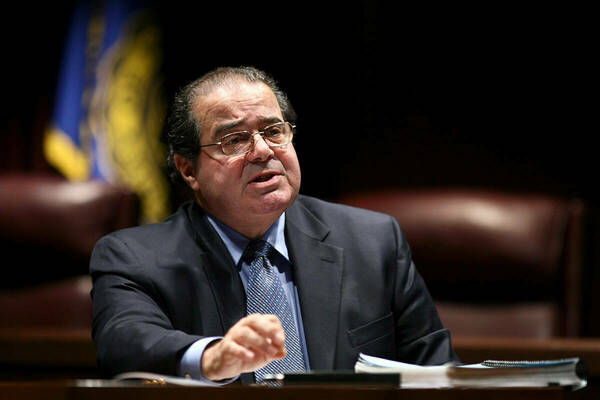
Associate Justice Antonin Scalia spoke at Notre Dame twice and received an honorary degree from the University during his years on the Supreme Court.
In 2007, Justice Scalia delivered the opening lecture at a conference organized by the Notre Dame Law Review and Professor Anthony J. Bellia, who clerked for Scalia at the Supreme Court. In his lecture, “The Importance of Structure in Constitutional Interpretation,” Scalia discussed the unique function of the judiciary in American government and analyzed several cases that the Supreme Court has decided.
Scalia previously spoke at Notre Dame during the spring semester in 1997, when he delivered a lecture titled “On Interpreting the Constitution” in DeBartolo Hall. Also in 1997, the University presented Scalia with an honorary degree at commencement.
William Rehnquist
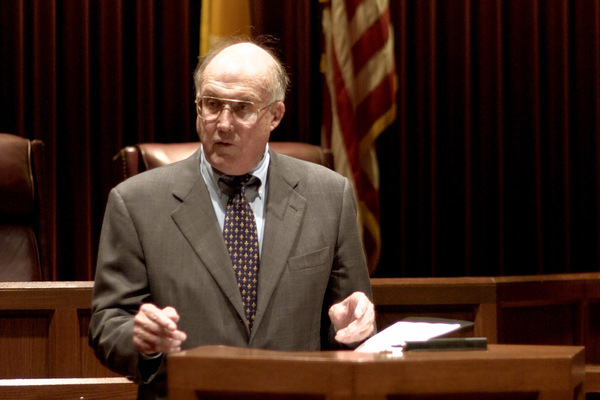
Chief Justice William Rehnquist spoke at the Law School in 2002 as the Judge James J. Clynes Jr. Visiting Chair.
His lecture was about the use of military tribunals in the United States during times of war. The historical perspective focused on what the Supreme Court had said in the past about the use of these tribunals. It was a timely topic, as the chief justice delivered his speech around the one-year anniversary of 9/11.
Rehnquist also attended a First Amendment class taught by Professor Richard Garnett, who clerked for the chief justice during the Supreme Court’s 1996-97 term.